Thrive Mental Health Platform
Designing an AI-powered mental health chatbot and wellness platform to provide accessible, personalized mental health support and resources
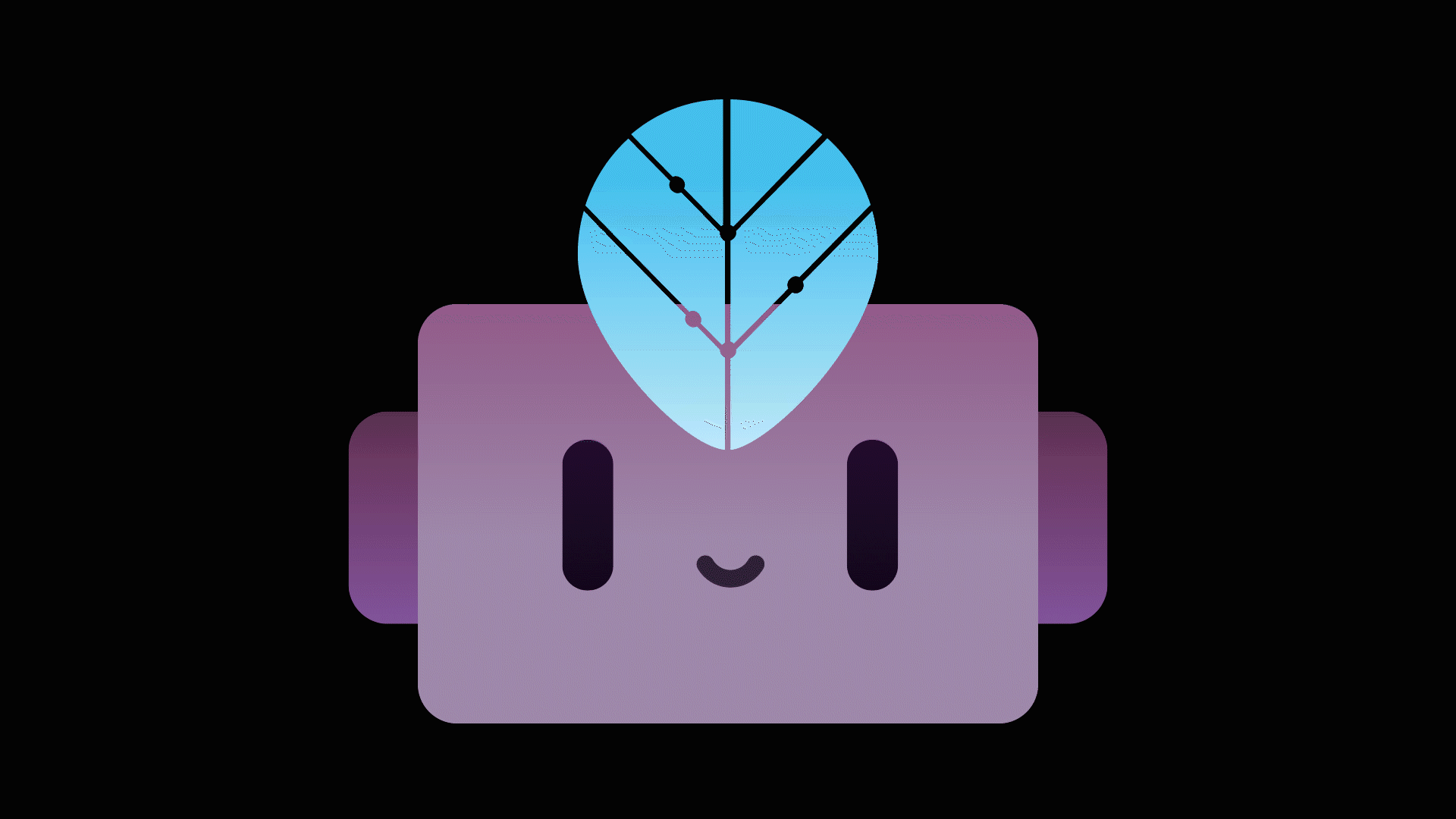
Thrivebot character animation created in After Effects to bring warmth and personality to AI mental health support
Overview
Thrive was an innovative mental health platform designed to make mental wellness support accessible, personalized, and engaging through AI-powered conversations. As the Product Designer, I created a comprehensive user experience that combined evidence-based therapeutic techniques with conversational AI to provide users with 24/7 mental health support.
The platform featured "Thrivebot," an empathetic AI assistant that guided users through personalized mental health journeys, mood tracking, coping strategies, and resource recommendations. My role encompassed the entire design process from user research and persona development to interface design and conversational flow optimization.
Design Challenge
Creating a mental health platform that feels supportive rather than clinical, accessible to users in crisis, and capable of providing meaningful therapeutic value through digital interactions while maintaining user privacy and safety.
Mobile Experience Design
The mobile experience was central to Thrive's accessibility mission. I designed intuitive interfaces that users could navigate even during moments of distress, with clear visual hierarchy, calming color palettes, and conversational interactions that felt natural and supportive.
Conversational Interface
The mobile interface centers around natural, therapeutic conversations with Thrivebot. Every interaction was designed to feel supportive and non-judgmental, creating a safe space for users to explore their mental health journey.

Mobile app interface showcasing conversational design and user-friendly navigation • Scroll to explore the full interface
Real-World Impact
Beyond the interface design, Thrive became an integral part of users' daily wellness routines. The app's empathetic approach and consistent engagement helped users build sustainable mental health habits.
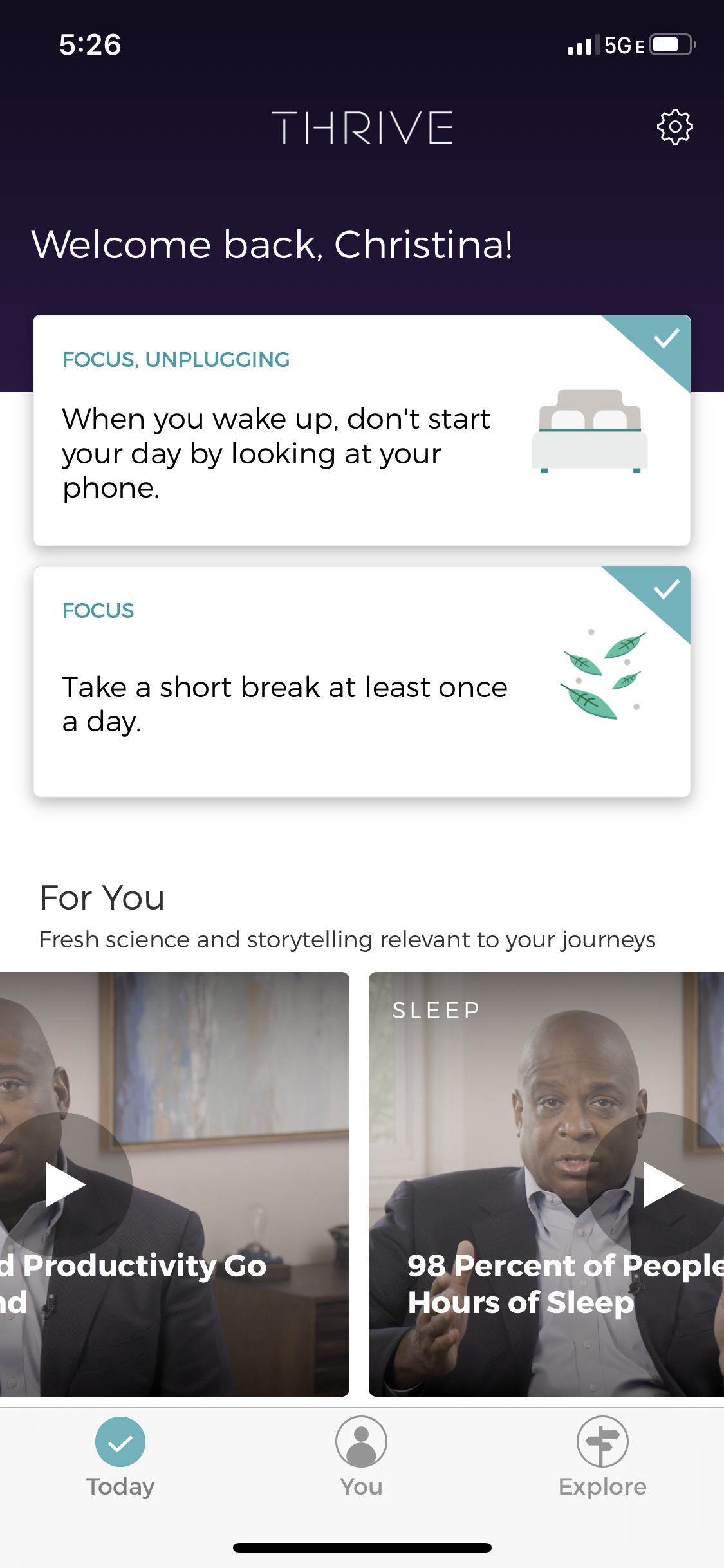
Real-world usage showing the app's integration into daily mental wellness routines
Conversational Interface Design
Designing conversations for mental health required deep empathy and understanding of therapeutic communication principles. I created dialogue flows that felt natural, supportive, and therapeutically valuable while ensuring users always felt heard and validated.
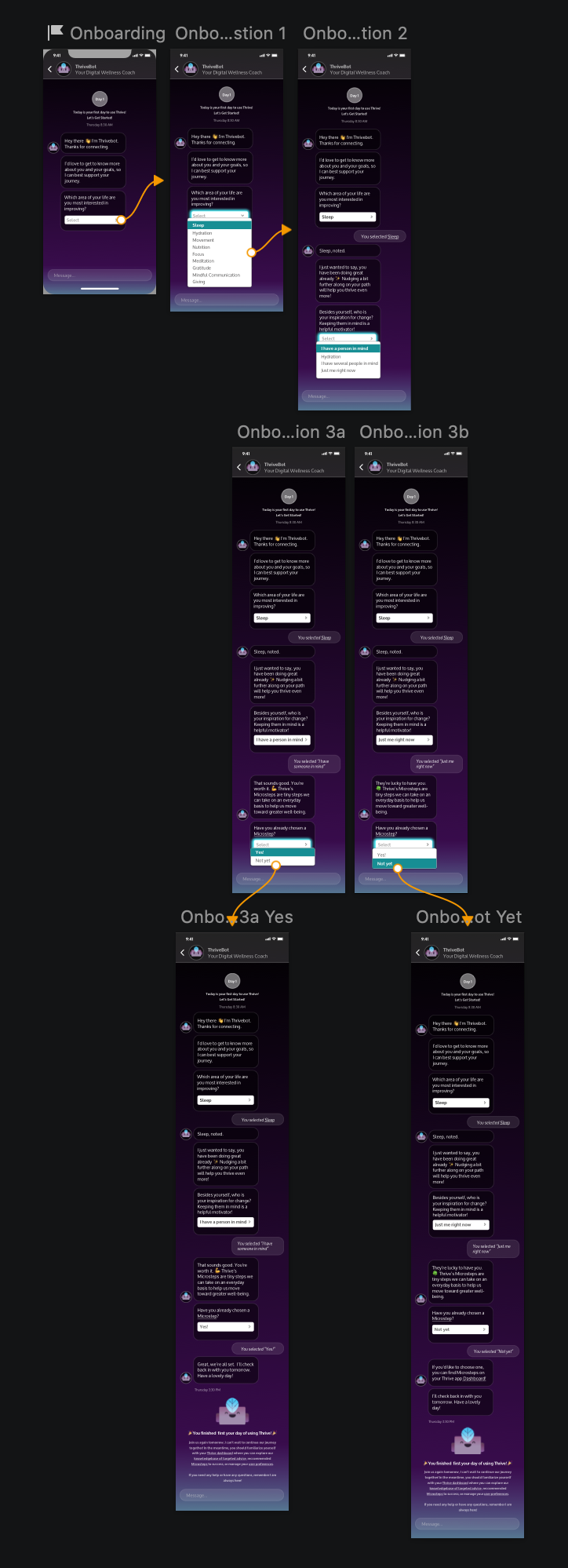
Main conversational interface showing Thrivebot's empathetic communication style and therapeutic guidance
Empathetic Responses
Crafted conversation flows that validate user emotions and provide appropriate therapeutic responses based on evidence-based practices.
Crisis Detection
Implemented safety protocols and crisis detection mechanisms to provide immediate support and professional resource connections.
Personalization
Designed adaptive conversation flows that learned from user interactions to provide increasingly personalized support.
Character Design & Motion Graphics
Creating Thrivebot required more than interface design—the character needed to feel approachable, trustworthy, and emotionally intelligent. I designed and animated the Thrivebot character using After Effects to bring personality and warmth to the AI assistant experience.
Character Design Principles
- • Approachable Form: Soft, rounded shapes to convey safety and warmth
- • Calming Colors: Gentle blues and purples aligned with mental wellness
- • Expressive Features: Simple but emotionally communicative design
- • Non-threatening Scale: Appropriately sized to feel supportive, not overwhelming
Animation & Motion Design
- • After Effects Animation: Custom character animations to show personality
- • Breathing Motion: Subtle life-like movements to create connection
- • Responsive Gestures: Animated reactions to user interactions
- • Therapeutic Pacing: Calm, measured movements that don't induce anxiety
Creating the Thrivebot Animation
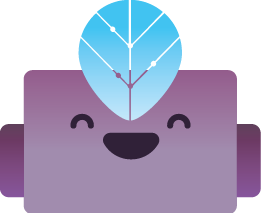
Static character design before animation
Design Process
- • Character Sketching: Initial concepts focusing on approachable, non-threatening forms
- • Color Psychology: Selected calming blues and purples to reduce anxiety
- • Expression Studies: Designed subtle facial expressions to convey empathy
- • Movement Planning: Mapped breathing patterns and gentle gestures
After Effects Execution
- • Rigging System: Built flexible puppet pin controls for organic movement
- • Breathing Animation: Subtle scale and position keyframes for life-like presence
- • Easing Curves: Smooth, therapeutic timing to avoid jarring movements
- • Loop Optimization: Seamless cycling for continuous, calming presence
Technical Considerations
The animation needed to work across multiple platforms while maintaining small file sizes for mobile performance. I optimized the After Effects composition for web delivery, balancing visual quality with loading speed to ensure the character could provide immediate comfort without technical barriers.
Motion Design Impact
The custom After Effects animations helped users form an emotional connection with Thrivebot, making the AI feel less mechanical and more like a caring companion. This attention to character animation was crucial for building trust in a mental health context, where users needed to feel comfortable sharing personal struggles with a digital assistant.
Onboarding & Assessment
The onboarding experience was crucial for establishing trust and understanding each user's unique mental health needs. I designed a compassionate assessment process that felt more like a supportive conversation than a clinical questionnaire.

Compassionate onboarding process designed to establish trust and understand user needs • Scroll to explore the full interface
Key Onboarding Principles
- • Privacy First: Clear communication about data protection and user control
- • Gradual Disclosure: Building trust through progressive information sharing
- • Immediate Value: Providing helpful resources from the first interaction
- • Flexible Pacing: Allowing users to move at their own comfort level
Wellness Tracking & Scheduling
Beyond conversations, Thrive offered comprehensive wellness tracking and scheduling features. I designed intuitive interfaces for mood tracking, goal setting, and wellness activity scheduling that integrated seamlessly with the conversational experience.
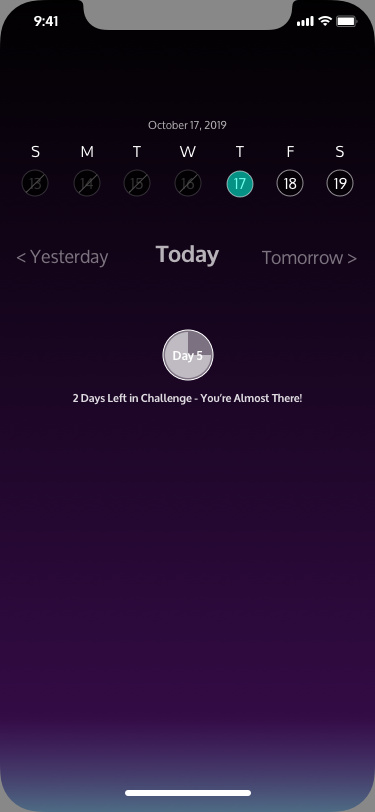
Wellness scheduling and tracking interface designed for easy habit formation and progress monitoring • Scroll to explore the full interface
Mood & Progress Tracking
- • Visual mood tracking with customizable metrics
- • Progress visualization and pattern recognition
- • Integration with therapeutic goal setting
- • Shareable insights for healthcare providers
Wellness Activities
- • Guided meditation and mindfulness exercises
- • Cognitive behavioral therapy (CBT) techniques
- • Personalized coping strategy recommendations
- • Community support and peer connections
Research & Design Process
Designing for mental health required extensive research into therapeutic best practices, user psychology, and accessibility needs. I conducted interviews with mental health professionals, potential users, and existing app users to understand the unique challenges of digital mental health support.
User Research Insights
- • Users needed immediate access during crisis moments
- • Privacy and anonymity were paramount concerns
- • Traditional therapy language felt intimidating
- • Visual design significantly impacted emotional state
Design Principles
- • Empathy-first conversational design
- • Calming, accessible visual hierarchy
- • Evidence-based therapeutic integration
- • Crisis-aware safety mechanisms
Impact & Results
Thrive's compassionate design approach resulted in high user engagement and positive therapeutic outcomes. The platform successfully made mental health support more accessible while maintaining the quality and safety standards required for mental health interventions.
Key Achievements
- • Accessibility Impact: Made mental health support available 24/7 to users who couldn't access traditional therapy
- • User Engagement: Achieved industry-leading retention rates through empathetic design
- • Therapeutic Value: Users reported significant improvements in mood awareness and coping skills
- • Safety Standards: Successfully implemented crisis detection and professional referral systems
- • Platform Recognition: Featured in mental health innovation showcases and therapeutic technology conferences
Design Lessons & Insights
Working on Thrive taught me invaluable lessons about designing for vulnerable populations, the importance of ethical AI in healthcare, and the power of empathetic design to create meaningful therapeutic relationships through digital interfaces.
Key Learnings
- • Empathy in AI: Conversational AI can provide genuine therapeutic value when designed with deep empathy and clinical understanding
- • Safety-First Design: Mental health platforms require robust safety mechanisms and crisis intervention protocols built into every interaction
- • Trust Through Transparency: Users need clear understanding of how their data is used and protected, especially in mental health contexts
- • Accessibility Beyond Compliance: True accessibility in mental health means designing for users in various emotional and cognitive states